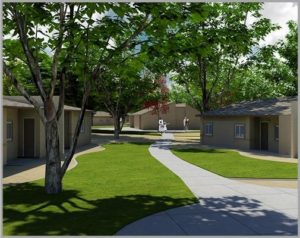Rental Assistance Demonstration (RAD)
 For nearly a century, public housing has provided security and stability for nearly 1 million people. Public housing is permanently affordable and publicly owned. It’s a lifeline for poor and working people, but decades of racial discrimination stigmatized the program so that it’s been chronically underfunded. As a result, properties have fallen into serious disrepair, hundreds of thousands of critical units have already been taken out of the program, and the federal government continues to get rid of or demolish more than 10,000 units each year. The cost to repair our country’s public housing was estimated at $26 billion in 2010 and increased to $169 billion in 2025.
For nearly a century, public housing has provided security and stability for nearly 1 million people. Public housing is permanently affordable and publicly owned. It’s a lifeline for poor and working people, but decades of racial discrimination stigmatized the program so that it’s been chronically underfunded. As a result, properties have fallen into serious disrepair, hundreds of thousands of critical units have already been taken out of the program, and the federal government continues to get rid of or demolish more than 10,000 units each year. The cost to repair our country’s public housing was estimated at $26 billion in 2010 and increased to $169 billion in 2025.
That’s why in 2011, in response to the serious repair needs at public housing properties, Congress enacted the Rental Assistance Demonstration (RAD) to preserve and improve public housing buildings and other properties. The RAD program enables Public Housing Authorities and owners to change the type of housing assistance provided at certain properties by converting these properties to the project-based voucher (PBV) or project-based rental assistance (PBRA) programs.
When done effectively, RAD can save tenant homes, enforce tenant protections, and help finance critical repairs for owners of public housing and four “legacy” programs under the Department of Housing and Urban Development (HUD):
- Rental Supplement (Rent Supp);
- Rental Assistance Payment (RAP);
- Section 8 Moderate Rehabilitation (Mod Rehab); and
- Section 202 properties with Project Rental Assistance Contracts (PRACs).
To maintain and improve existing properties, owners have the option to enter into long-term project-based Section 8 contracts, which allow for more funding flexibility, including the use of other funding sources like Low-Income Housing Tax Credits.
The RAD program has two components, both with built-in significant tenants’ rights:
- Under RAD Component 1, public housing units may convert to PBVs or PBRA. As of 2025, the number of Component 1 conversions is capped at 455,000 public housing units nationwide, with the converting units chosen by HUD through a competitive selection process.
- Under RAD Component 2, Mod Rehab, Rent Supp, RAP, and Section 202 PRAC units may convert to PBVs or PBRA. For the Component 2 conversions, there is no cap and thus no competitive selection process.
The RAD program is a useful tool to preserve tenant homes for the long-term and incorporates many strong tenant protections to do so. However, we are concerned about the local implementation of these rights and HUD’s ability to oversee RAD conversions nationwide. These concerns are discussed in NHLP’s 2017 letter to HUD, a 2018 General Accountability Office Report, and this 2018 Shelterforce article.
RAD conversions result in many changes for residents, including new legally enforceable documents (lease, house rules, grievance procedures) and new everyday logistics (possibly a new owner or manager, rent payment procedures, building repairs, or temporary relocation). Ensuring adequate implementation of tenants’ rights requires significant local tenant involvement, national coordination among tenant advocates, and ongoing discussions with HUD about ways to improve the RAD program.
For more information about RAD tenants’ rights, see:
- Section 12.2.4 of NHLP’s Green Book;
- NHLP’s Don’t Get RAD-dled training series;
- NHLP’s RAD Beginner’s Guide;
- NHLP’s Things You Need to Know About Your Local RAD Conversion factsheet; and
- HUD’s RAD Resident Fact Sheets.
For more information about RAD, please contact Korey Lundin at klundin@nhlp.org.
